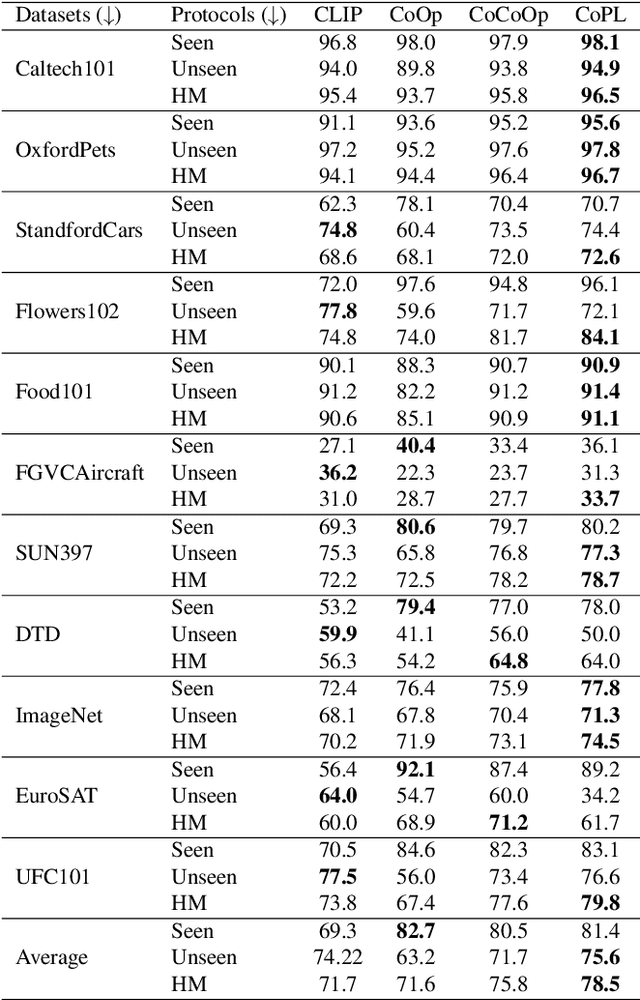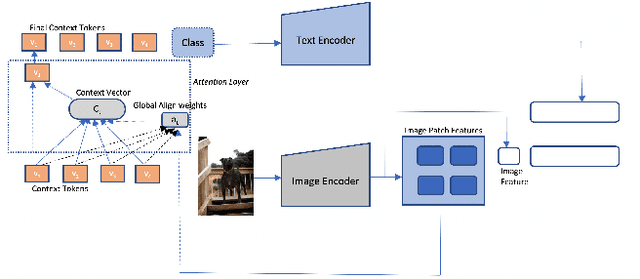Joseph K J
POET: Prompt Offset Tuning for Continual Human Action Adaptation
Apr 25, 2025Abstract:As extended reality (XR) is redefining how users interact with computing devices, research in human action recognition is gaining prominence. Typically, models deployed on immersive computing devices are static and limited to their default set of classes. The goal of our research is to provide users and developers with the capability to personalize their experience by adding new action classes to their device models continually. Importantly, a user should be able to add new classes in a low-shot and efficient manner, while this process should not require storing or replaying any of user's sensitive training data. We formalize this problem as privacy-aware few-shot continual action recognition. Towards this end, we propose POET: Prompt-Offset Tuning. While existing prompt tuning approaches have shown great promise for continual learning of image, text, and video modalities; they demand access to extensively pretrained transformers. Breaking away from this assumption, POET demonstrates the efficacy of prompt tuning a significantly lightweight backbone, pretrained exclusively on the base class data. We propose a novel spatio-temporal learnable prompt offset tuning approach, and are the first to apply such prompt tuning to Graph Neural Networks. We contribute two new benchmarks for our new problem setting in human action recognition: (i) NTU RGB+D dataset for activity recognition, and (ii) SHREC-2017 dataset for hand gesture recognition. We find that POET consistently outperforms comprehensive benchmarks. Source code at https://github.com/humansensinglab/POET-continual-action-recognition.
* ECCV 2024 (Oral), webpage https://humansensinglab.github.io/POET-continual-action-recognition/
Contextual Prompt Learning for Vision-Language Understanding
Jul 03, 2023



Abstract:Recent advances in multimodal learning has resulted in powerful vision-language models, whose representations are generalizable across a variety of downstream tasks. Recently, their generalizability has been further extended by incorporating trainable prompts, borrowed from the natural language processing literature. While such prompt learning techniques have shown impressive results, we identify that these prompts are trained based on global image features which limits itself in two aspects: First, by using global features, these prompts could be focusing less on the discriminative foreground image, resulting in poor generalization to various out-of-distribution test cases. Second, existing work weights all prompts equally whereas our intuition is that these prompts are more specific to the type of the image. We address these issues with as part of our proposed Contextual Prompt Learning (CoPL) framework, capable of aligning the prompts to the localized features of the image. Our key innovations over earlier works include using local image features as part of the prompt learning process, and more crucially, learning to weight these prompts based on local features that are appropriate for the task at hand. This gives us dynamic prompts that are both aligned to local image features as well as aware of local contextual relationships. Our extensive set of experiments on a variety of standard and few-shot datasets show that our method produces substantially improved performance when compared to the current state of the art methods. We also demonstrate both few-shot and out-of-distribution performance to establish the utility of learning dynamic prompts that are aligned to local image features.
Zero Shot Domain Generalization
Aug 17, 2020



Abstract:Standard supervised learning setting assumes that training data and test data come from the same distribution (domain). Domain generalization (DG) methods try to learn a model that when trained on data from multiple domains, would generalize to a new unseen domain. We extend DG to an even more challenging setting, where the label space of the unseen domain could also change. We introduce this problem as Zero-Shot Domain Generalization (to the best of our knowledge, the first such effort), where the model generalizes across new domains and also across new classes in those domains. We propose a simple strategy which effectively exploits semantic information of classes, to adapt existing DG methods to meet the demands of Zero-Shot Domain Generalization. We evaluate the proposed methods on CIFAR-10, CIFAR-100, F-MNIST and PACS datasets, establishing a strong baseline to foster interest in this new research direction.
 Add to Chrome
Add to Chrome Add to Firefox
Add to Firefox Add to Edge
Add to Edge